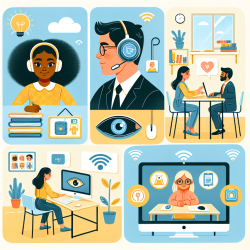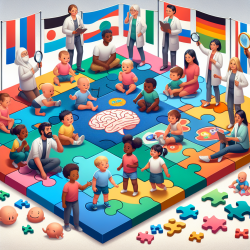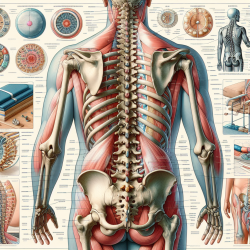As the world of special education continues to evolve, the integration of new technologies plays a pivotal role in enhancing learning experiences and therapeutic outcomes for students with diverse needs. Among these advancements, the development and application of digital hearing aids stand out as a transformative leap forward, particularly for individuals with hearing impairments. Drawing insights from the research article "Design Criteria for New Technologies" by A. Maynard Engebretson, this blog post explores how practitioners can improve their skills and service delivery by embracing these technological advancements or delving further into research.
Hearing aids have traditionally been constrained by limitations in design and functionality, impacting the performance and satisfaction levels among users. Engebretson's research identifies critical areas in hearing aid design that can be significantly improved through the application of new technology. Key components such as microphones, receivers, and batteries, when enhanced with digital processing and miniaturization, can revolutionize the user experience by offering superior performance, greater comfort, and increased customization.
One of the groundbreaking shifts highlighted in the research is the transition from analog to digital processing in hearing aids. Digital processing allows for the implementation of sophisticated signal processing algorithms that can dramatically improve sound quality, reduce background noise, and adapt to changing environmental conditions without manual intervention. This not only enhances the clarity and intelligibility of speech for the wearer but also provides a more natural listening experience.
Furthermore, the miniaturization of electronic components, as discussed in the research, opens up new possibilities for the design of discreet, more powerful hearing aids. This advancement can lead to the development of devices that are not only more aesthetically pleasing but also more efficient in power consumption, thereby extending battery life and reducing the need for frequent replacements or recharges.
For practitioners working in special education and therapy services, such as those provided by TinyEYE, staying abreast of these technological advancements is crucial. By integrating digital hearing aids into their practice, they can offer more effective, personalized solutions to students with hearing impairments, thereby enhancing their learning and communication abilities. Additionally, practitioners are encouraged to engage in ongoing research and professional development to explore new technologies and methodologies that can further improve the efficacy of hearing aids and other assistive devices.
In conclusion, the evolution of hearing aid technology, driven by digital processing and miniaturization, presents a significant opportunity for special education practitioners to enhance their service delivery and improve outcomes for individuals with hearing impairments. By adopting these technologies and committing to continuous learning and research, practitioners can make a profound impact on the lives of their students.
To read the original research paper, please follow this link: Design Criteria for New Technologies.










